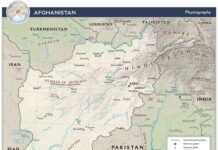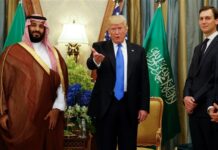Context

If an offensive goes ahead, Pakistan’s military will be unable to take full control of North Waziristan, a ruggedly mountainous zone slightly larger than the US state of Rhode Island, said Imtiaz Gul, executive director of the Center for Research and Security Studies in Islamabad. And no offensive will significantly weaken the militant groups based in North Waziristan unless US and Afghan forces are able to block the mountainous border and prevent the escape of militant fight
ers into Afghanistan, Gul told a February 10 conference sponsored by the Atlantic Council’s South Asia Center, and moderated by its director, Shuja Nawaz. The talks initiated by the Nawaz government with TTP, ![]() are likely meant to create political space for a military operation, said Arif Ansar, the chief analyst and CEO of PoliTact, a Washington-area strategic consulting firm.
are likely meant to create political space for a military operation, said Arif Ansar, the chief analyst and CEO of PoliTact, a Washington-area strategic consulting firm.
Summary
While Pakistan’s government and its Taliban movement formally have started peace talks, events there suggest that the coming months may as likely bring a Pakistani military offensive, long sought by the United States, against the country’s biggest territorial stronghold of the Taliban and other militant groups. In late January, the Pakistani military and the Taliban traded their heaviest attacks on each other in recent months, many of them around that stronghold, the district of North Waziristan.
Surgical strikes informed by good intelligence may be able to weaken the Taliban’s leadership, Gul said. On the night of January 20, Pakistan’s air force attacked villages in the Mir Ali area of North Waziristan, the second time in a month that Pakistan has launched such air strikes. Those strikes have come as the United States effectively has suspended (since December 25) its campaign of missile attacks from remotely piloted drones, a campaign that that overwhelmingly has targeted militant groups in North Waziristan.
As Gul spoke in Washington, Taliban leaders in North Waziristan hosted a team of mediators for talks with the government that began in earnest this week. Those negotiations are not likely to bring a real reconciliation between the two, but may help the government of Prime Minister Nawaz Sharif demonstrate to Pakistanis that it seriously attempted peacemaking before any eventual military assault, said Arif Ansar.
Sharif won election in last year promising to favor negotiations, rather than military attacks, in an effort to halt the Taliban insurgency of recent years. He faces political pressure against an assault on the Taliban from opposition leader Imran Khan. Khan says the Taliban movement will subside after US forces withdraw this year from their combat role in neighboring Afghanistan.
But the just-started peace talks are likely to underscore the deep political and cultural divide between the government and the Taliban, Gul said. The Taliban demand that Pakistan’s constitution be scrapped and that Islamic sharia law be used to rule the country.
Arif went on to elaborate and emphasize the following strategic calculations:
➢ On the other side of the border, President Karzai is increasingly seeking peace talks and has linked the Bilateral Security Agreement on this. In such a situation, how will Pakistan’s approach against TTP fit with the US withdrawal this year?
➢ Furthermore, as Pakistan exerts military pressure on TTP, will they shift to Afghanistan, as occurred in Swat and other operations in the past, or will they hide with in Pakistan cities and other tribal agencies? And in this context, how will this operation be different than the past ones?
➢ If Taliban do shift to Afghanistan, will the country act against them, or will the border regions become a refuge for TTP, as FATA has become for Afghan Taliban factions? This is already the case in Nuristan and Kunar provinces where the Taliban moved after the Swat operation in 2009, and from where they conduct activities in the settled areas of Pakistan.
➢ Is Pakistan seeking a serious push against TTP or just maneuvering to pressure it towards peace talks? Will the nation also incorporate action against other allied extremist groups? If not, how will these groups and Afghan Taliban react to pressure on TTP? And, has the nation prepared for the possible reaction.
➢ What will be the impact of the approach adopted on the US-Pakistan and Pakistan-India ties?
➢ What lessons can be drawn from the evolution of Al Qaeda and extremist groups in the Middle East and North Africa? The emerging division is increasingly between extremist groups with local agenda, and groups with regional and global ambitions. The intermingling of Arab Spring, war against extremists, Shiite- Sunni tussles, and the global balance of power struggles, has immensely complicated the situation, and is weakening the nation-state in these regions.
➢ After the potential inclusion of Iran in the Geneva II talks over Syria, will Iran also become a part of the formal talks on Afghanistan? In essence, what will be the impact of the flux in the balance of power in Middle East on South Asia?
Click on the link to get the Script for the event.



